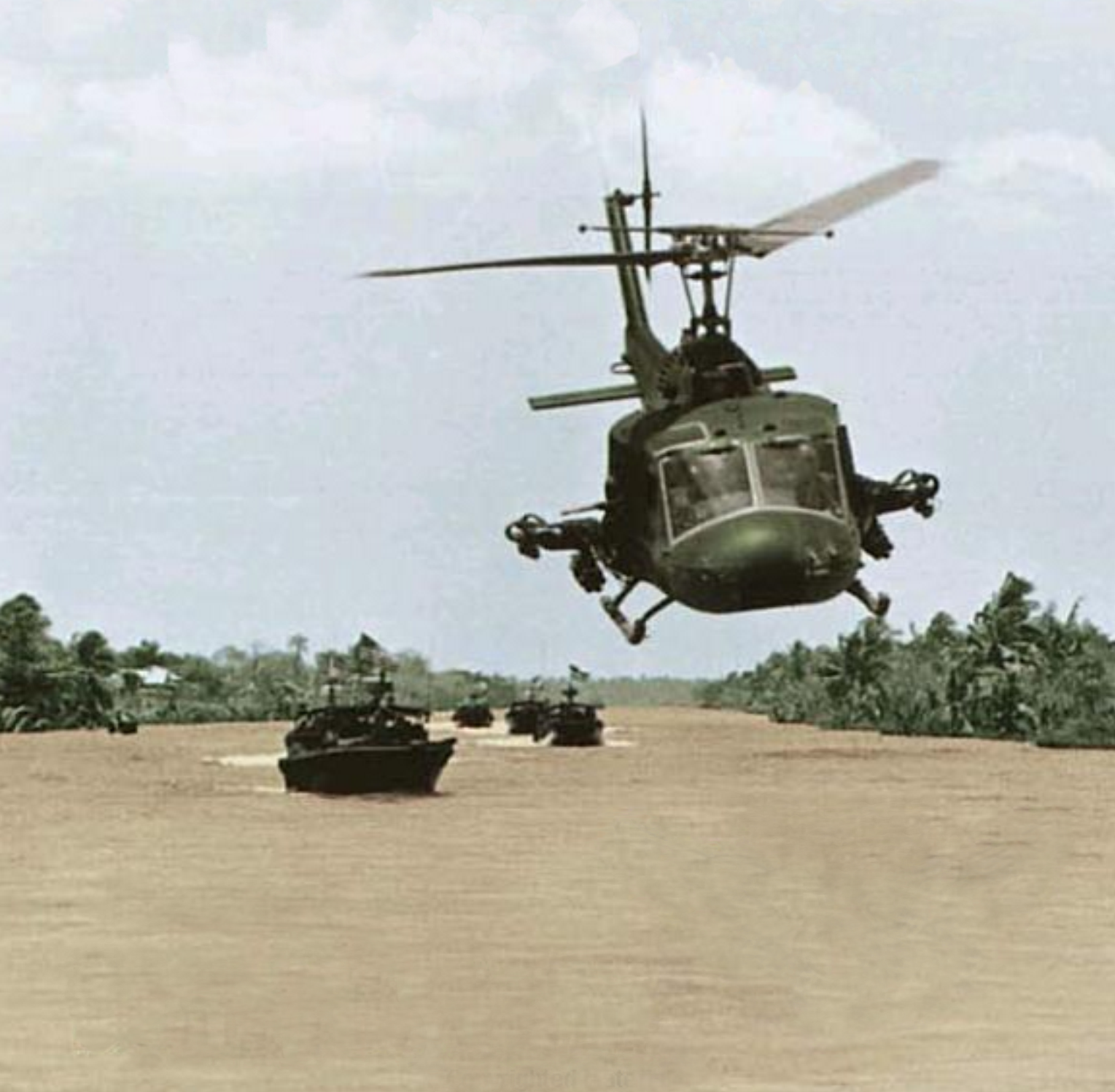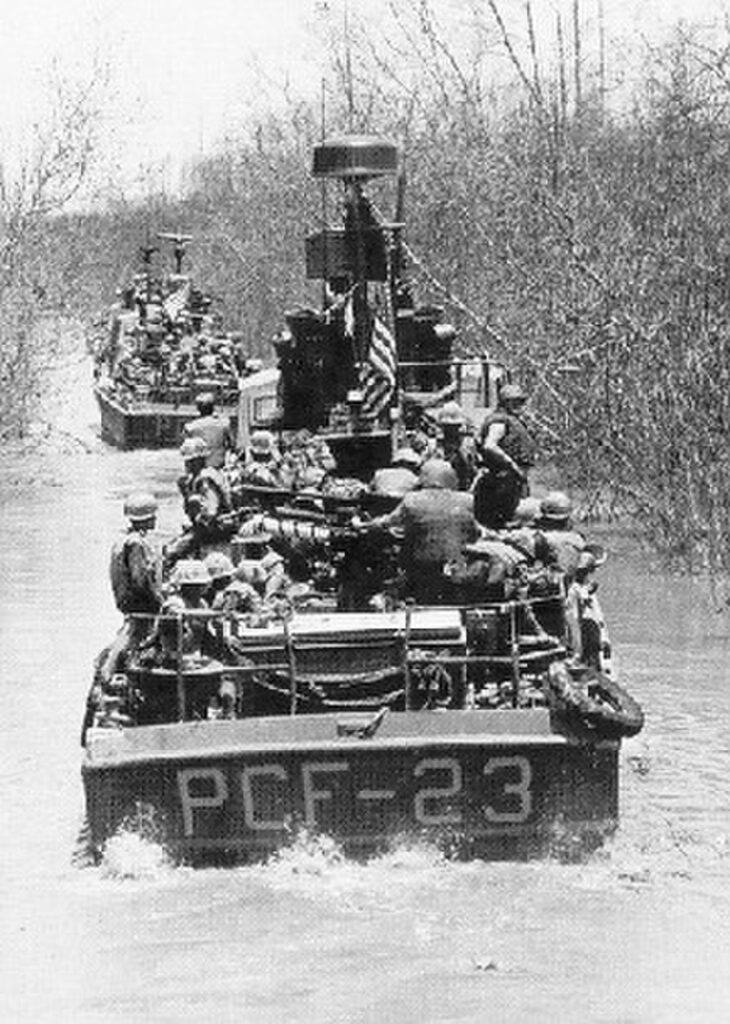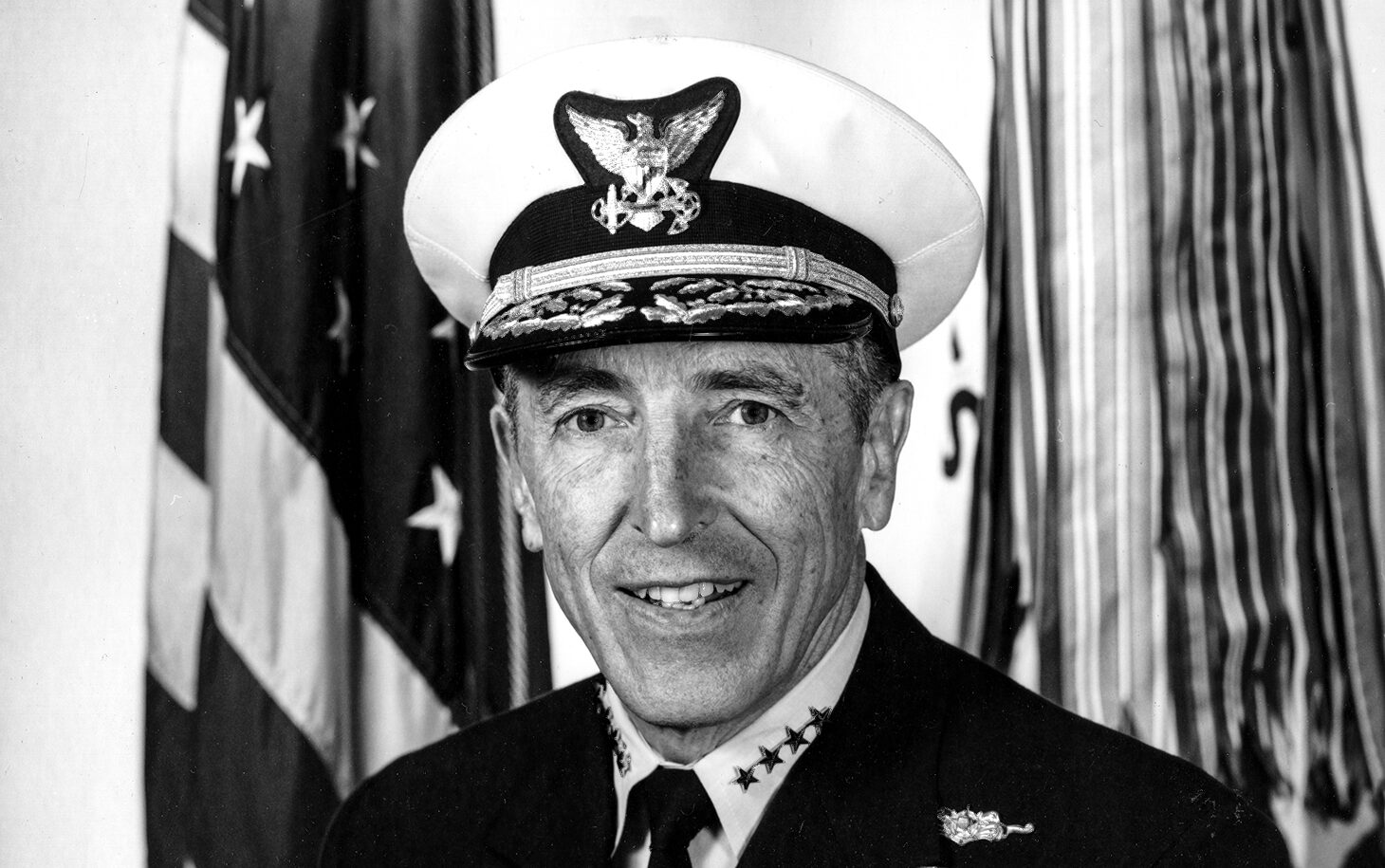When Paul A. Yost Jr. assumed the position of Commandant of the United States Coast Guard in 1986, he approached the role with a powerful philosophy: “You have to lead the charge.”
At the time this was considered as an over-aggressive approach to leading what was viewed as more of a law enforcement agency than a military organization, but Admiral Yost had learned that lesson the hard way – in the jungles of Vietnam.
Ever since they discovered a fishing vessel smuggling weapons into Vung Ro Bay in 1965, Coast Guard and Navy personnel had been conducting a joint operation known as ‘Market Time.’ The goal was to apprehend, attack, or interrupt any smuggling in South Vietnam, to stop the flow of supplies to the Viet Cong. In 1968 the Coast Guard Combat Commander attached to ‘Market Time’ billet opened up to volunteers.

Because no one came forward for the position, the command reached out to Commander Paul A. Yost Jr., then on board the cutter Resolute. However, Yost refused the offer, explaining that he had a family back home and couldn’t risk his life in combat halfway around the world.
Paul A. Yost Jr Arrived in Vietnam
The next day he received dispatch orders to Vietnam – he had just become the Coast Guard’s first involuntary deployment of the Vietnam war.
After two months of language and survival training, Yost arrived in Vietnam and took on his first combat command. Before this experience, he had been a lifesaver, leading men in the never-ending fight against death at sea. But service in Vietnam was an entirely different beast, once there, he noted, “I truly have trained killers working for me.”

As the senior Coast Guardsman in the region, he was in command of 9 swift-boats, explosive ordnance teams, and whenever they were available, a few companies of local ground troops. As this was his first combat command Yost had to quickly come up with a method for planning. He decided on a straightforward aggressive approach: 5 patrols a day, six days a week. To ensure that his planning never got sloppy, he would lead half of them.
His willingness to lead missions himself is what made the true difference during one patrol into the Ca Mau peninsula, the southern-most tip of Vietnam. He went in with his nine swift boats, and two companies of South Vietnamese Marines, with two USMC advisers.
His superior, Captain Roy Hoffman was commanding the operation from a repurposed landing craft and held two Sea Wolf attack helicopters in reserve.
Yost knew that he would be most effective with his men in the fray, so he went out on the 3rd of the nine boats. The plan seemed simple enough: land the Marines and their advisers and help them sweep the shores for Vietcong. They arrived at the debarkation point, but the advisers asked him to move upriver a mile or so, the shores seemed quiet, and it would save the men a lot of time and fatigue walking through a hot, dense forest.
Yost requested the helicopters come up to support him and received an affirmative from the command boat. With air power overhead and seemingly calm forests, he began moving forward.

One of the Lessons of the Vietnam War
But nothing that day was as it seemed. The boats rushed forward, hoping to get the troops on shore as quickly as possible. But before they got even half the way to their new destination all hell broke loose. Machine gun and rocket fire exploded out of the river banks, and the boats were suddenly caught in the middle of a horrific ambush.
Yost yelled into his radio for the helicopters to “open up” on the banks, only Now Yost was stuck in the middle of enemy territory, taking fire from both sides, and his only option was to power through.
He knew the best defense here was speed, and the boats pushed through the ambush at full throttle. When things finally calmed down and they felt safe again they took stock of their situation. They had lost about 10 percent of the men on deck, including the machine gunner on Yost’s boat, who was hit in the 4-inch gap between his flak jacket and flak pants.
They beached the boats and told the South Vietnamese troops to dismount and sweep south to hit the Vietnamese. But the marines refused, saying they were outnumbered, and it was safer to dig in and prepare for a night of defense.to hear that they were just now being scrambled. Captain Hoffman had denied his request for air support, but the message was never passed back down.

Yost was then informed that they were a boat short: one had been left in the combat zone. He knew he couldn’t leave anyone behind and realized he couldn’t in good conscience order his men to go back into that hell. His only remaining option was to lead his men back there. After readying his boat, he yelled at one of the other skippers, a Lieutenant Junior Grade in the Navy Reserve, to follow him.
They sped back towards the ambush area and found the stranded boat beached, the remaining crew using the boat itself as cover from a torrent of machine gunfire. The two rescue boats suppressed the Vietcong machine gunners just long enough to pull alongside the beached boat.
Yost called to the men to get on board his boat, but they refused, saying they couldn’t leave their dead skipper. Yost grabbed the officer’s body, and pulled it on his own boat, followed by the surviving crew. The two rescue boats sped back to their main force, but there was little fighting for the rest of the operation, the Viet Cong disappeared back into the forest, and the stranded swift boat was looted.

Militarily the operation was a bust, they weren’t even able to gather intelligence on the enemy in the area. But even the most fruitless missions can teach us a valuable lesson.
Commander Yost earned a Silver Star for his bravery, skill, and sacrifice but what he took away from the operation was even more valuable: he now knew what true leadership was.
Paul A. Yost Jr. went on to be the 18th Commandant of the United States Coast Guard. His tenure as commandant was marked with the same ferocity and leadership which he displayed in the jungles of Vietnam.
He expanded the military readiness of the organization and used his combat experience to create the Drug Interdiction and Assistance Team, which took the Coast Guard face to face with south American narcotics traffickers by using riverine operations similar to those he conducted in Vietnam.
Read About Other Profiles in Courage
If you enjoyed learning about Admiral Paul A. Yost Jr, we invite you to read about other profiles in courage on our blog. You will also find military book reviews, veterans’ service reflections, famous military units and more on the TogetherWeServed.com blog. If you are a veteran, find your military buddies, view historic boot camp photos, build a printable military service plaque, and more on TogetherWeServed.com today.

If the dates behind And Host’s name are supposed to be for his life, they are wrong. He lived from 1929 to 2022. If they are for his time in service, they are correct.